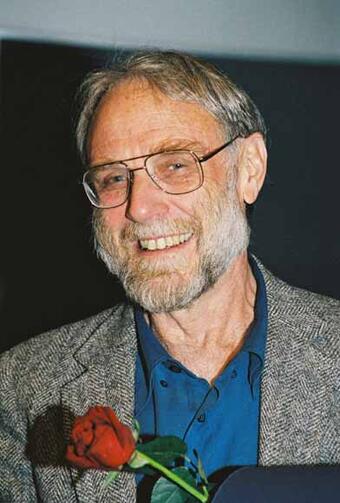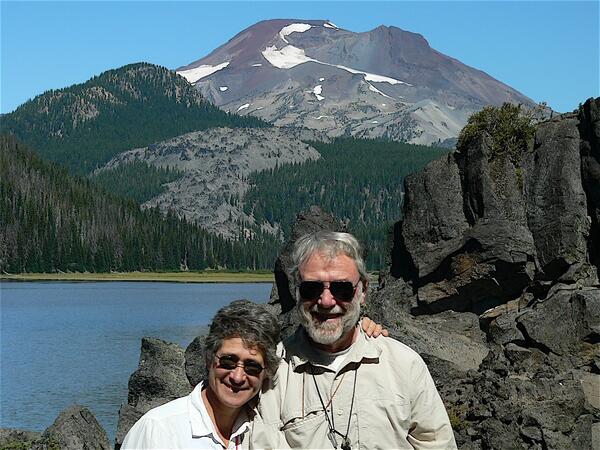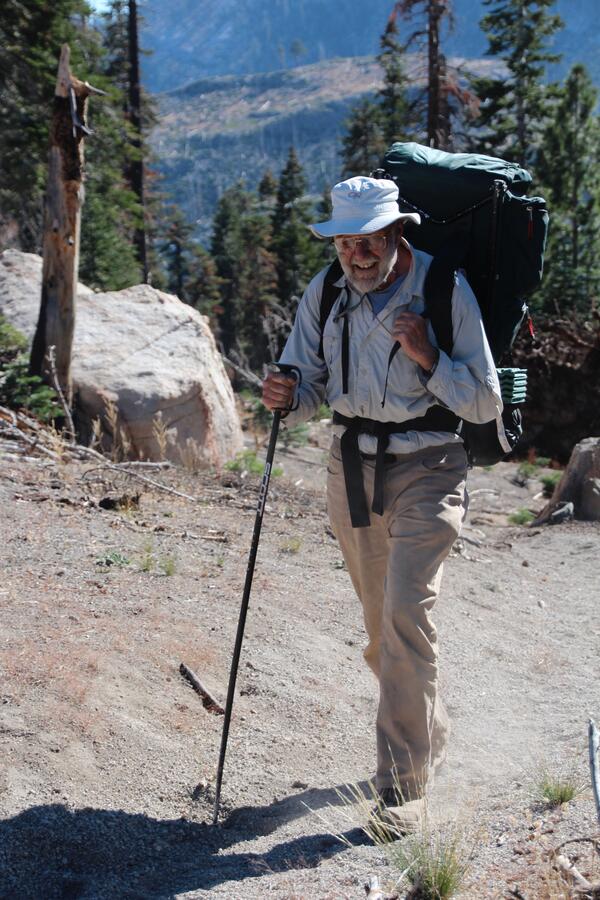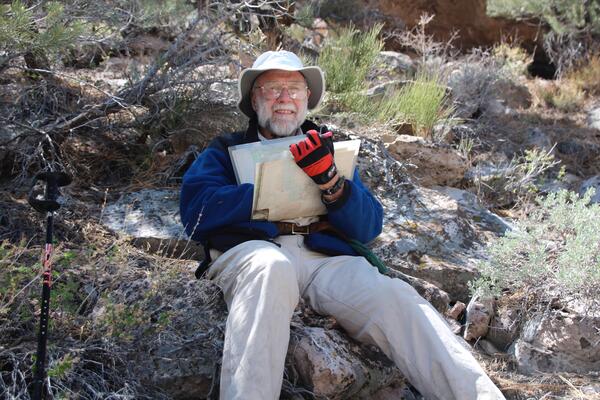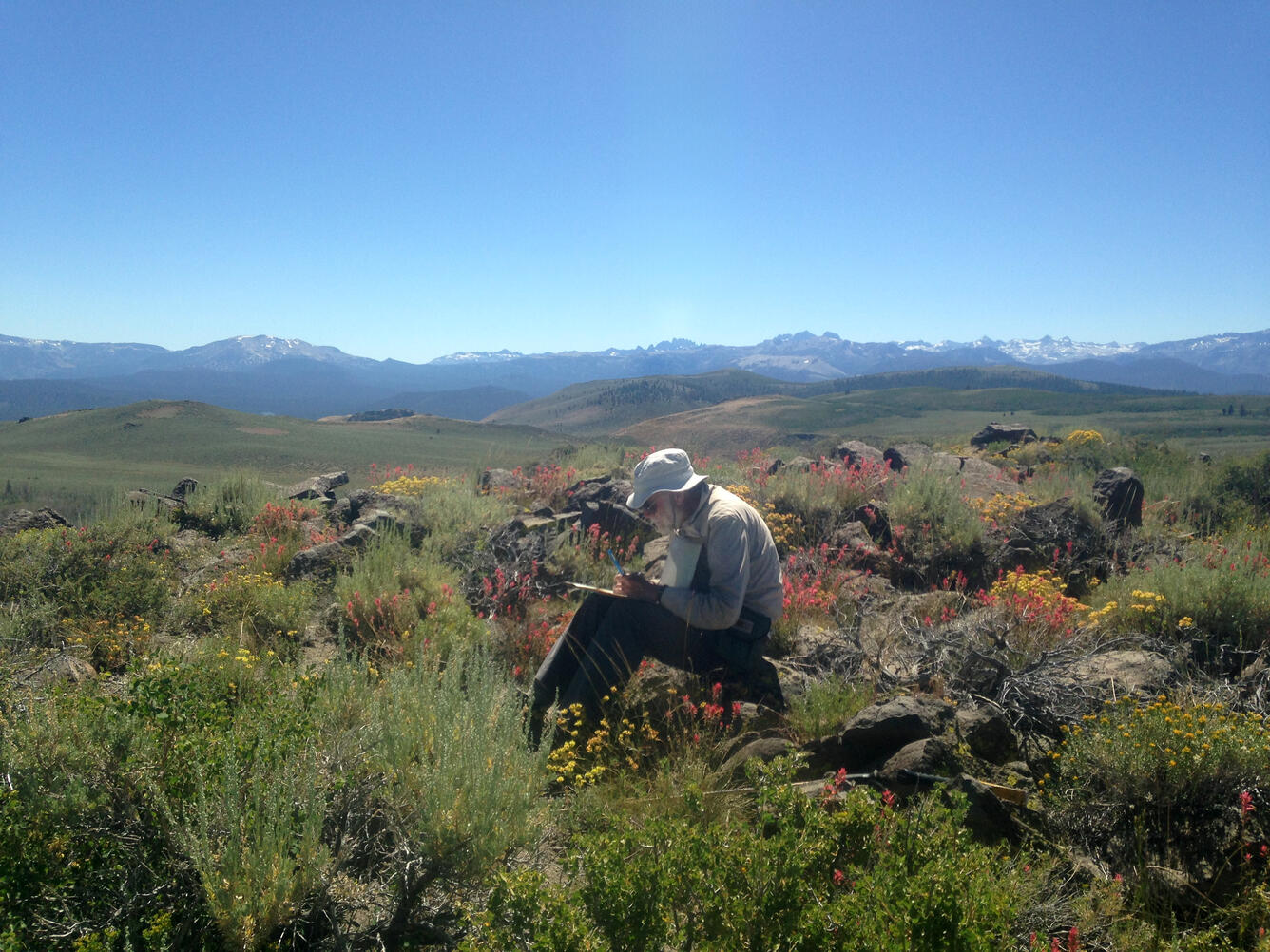In Memoriam: Wes Hildreth, 1938-2025
The USGS California Volcano Observatory is saddened to announce the death of Edward Wesley (Wes) Hildreth III, in a vehicle accident on June 19, 2025, in rural western Nevada near Long Valley Caldera.
Wes was born on August 17, 1938, in Newton, MA, and lived most of his early life in the Boston and San Francisco Bay areas. He studied at Harvard, where he majored in geology with a minor in government (BA, 1961). Receiving a Harvard Sheldon Fellowship, he traveled around the world alone in 1961-62. In 1963, he drove his Volkswagen van to Panama and back. After two years at Harvard graduate school in international affairs, he withdrew, alienated by bitterness over the Vietnam War. Between 1966 and 1970, Wes was a National Park Service naturalist at Muir Woods, Glacier Bay, Grand Canyon, Olympic, and Death Valley national parks.
Wes returned to graduate school at the University of California, Berkeley, in 1970, intending to map Precambrian stratigraphy in Death Valley. Instead, he met Prof. Ian Carmichael and soon found himself studying igneous petrology and volcanology in an exceptionally fruitful environment with talented fellow students, including his future wife, Gail Mahood (geology professor at Stanford University). That period was characterized by the advent of precise and comprehensive trace-element analyses, the transformation from wet chemistry to X-ray fluorescence, and from mineral picking to the then still-primitive electron microprobe. Wes’s 1977 PhD on the Bishop Tuff ignited a global interest in large-scale silicic volcanism and magmatism that continues undiminished. He joined the USGS in 1977, where he remained a research leader for his whole career.
The many outstanding features of Wes’s productive career reflect his intertwined interests in mapping volcanoes and understanding large-scale magmatic processes. He combined the two (with a sometimes-intimidating gravitas) through numerous intensive, field-focused studies mostly in the U.S. and Chile. For more than 45 years, he did so with Judy Fierstein, an indefatigable field collaborator and the artistic talent behind their many geologic maps. Their work made heavy use of USGS analytical facilities and was made possible by the high-quality geochronology provided by the USGS argon dating laboratory.
Several facets of Wes’s research, often made with U.S. and international collaborators, stand out:
- Wes's petrologic study of the rhyolitic Bishop Tuff, pioneering in its detail and comprehensiveness, challenged models for generating wide ranges in trace-element abundances in the erupted products. After what Wes himself referred to as “…the wild-goose chase of Soret effects in magma chambers,” his subsequent comparisons with other ignimbrites and related plutonic systems and the efforts of many other workers led to what has become widely known as the “mush model,” which is now a central paradigm for the generation of silicic magmas.
- Turning to the ultimate driver of silicic magmatism, Wes recognized the fundamentally basaltic nature of most continental crustal magmatism and developed enduring concepts for what are now termed trans-crustal magmatic systems. His original 1981 concepts were further developed in 1988 to outline (using Chilean examples) the roles of crustal thickness and deep crustal processes (the MASH model) in the generation of arc magmas.
- At the Yellowstone Plateau volcanic field, Wes and his colleagues were the first to document the contrast between the narrow ∂18O range in the ignimbrites and the much lighter isotopic values of the earliest post-collapse lavas. His interpretation, that meteoric water was involved, initiated much research on the role of hydrothermally altered crust in the origins of low-d18O rhyolites and influenced the understanding of upper crustal silicic magma bodies.
- Studies of the Valley of Ten Thousand Smokes in Alaska yielded fundamental insights into how a complicated volcanic plumbing system beneath Novarupta and Katmai caldera led to a remarkable diversity of magmas erupting in the 1912 eruption.
- Wes’s contribution to the 1986 geologic map of the island of Pantelleria in Italy stands as the most detailed study of a peralkaline rhyolite volcanic center. It remains an important contribution to understanding the physical volcanology of low-viscosity felsic magmas and their associated calderas, as well as the chronology of volcanic ashes across the Mediterranean.
- Late in his career Wes turned to his love of basic field geology and stratigraphy and published compelling studies on the landscape evolution of eastern Sierra Nevada, including the geology and geomorphology of the Long Valley Caldera region, the evolution of the Owens River gorge, and the nature and timing of development of the eastern Sierra Nevada escarpment.
- A major legacy of Wes's productive career at the USGS are the detailed geologic maps and descriptions of volcanic histories for Mount Adams, Mount Baker, Three Sisters, and Simcoe Mountains in the Cascade Range of Washington and Oregon; Mammoth Mountain and Long Valley Caldera in eastern California; Katmai in Alaska; Quizapu-Descabezado and Laguna del Maule in Chile, and Pantelleria in Italy. In Wes’s words: "I’ve emphasized on-foot authentic geologic mapping of blank spots on the map, largely in wilderness or otherwise uninhabited areas."
Wes received wide recognition and awards during his career, including Fellow of the Geological Society of America (1985), Fellow (1995) and Bowen Award (1985) from the American Geophysical Union, Thorarinsson Medalist of the International Association of Volcanology and Chemistry of the Earth's Interior (2004), and a Meritorious Service Award from the Department of the Interior (2004). Wes and Judy Fierstein jointly received the 2019 Florence Bascom Mapping Award from the Geological Society of America. In response to the award, Wes noted that it “celebrated what I love doing best.”
Wes was an avid reader and maintained a broad knowledge of global affairs, which was seeded by his travels through the Harvard Sheldon Fellowship. To colleagues, he offered three-thousand-year perspectives on the roots of conflicts in the Middle East and Europe. Before starting fieldwork each day, he scrutinized and read aloud portions of the daily academic commentary on current domestic affairs.
Wes was also a lifelong runner. He ran cross-country for the Harvard Crimson, and he finished in 29th place in the 1960 Boston Marathon. While traveling the world on the Sheldon Fellowship, he spent two months training at an immersion running camp in Australia. Between 1955 and 1972, Wes competed in the Dipsea Race for a grueling 12 km over the flank of Mt. Tamalpais, just north of San Francisco. On June 6, 2025, just two weeks before his death, Wes was inducted into the Dipsea Foundation Hall of Fame. In his acceptance speech, he said, “Distance running can be as much a lifestyle as a competitive sport. At age 87, I still hit the road for an hour every day – 365 days – slower every year, but the mentality and fitness support my geological day job,” and “there’s a spiritual component - the freedom of the hills – the simple gift of communion with the landscape.”
Wes was an outstanding geologist who had broad interests, including aspects of regional geology well outside of his recognized specialties in volcanology and igneous petrology. His insights and contributions have been of the highest quality and promise to last over time. At the time of his death, Wes was still carrying out work in the Sierra Nevada, the Mono Basin, the Cima volcanic field (all in California), and the Mina volcanics in western Nevada near where he died. His body of work, meticulously detailed, authoritatively stated, and contained within beautifully written papers, remains as an enduring memorial to his creativity, knowledge, and influence.
Contributed by: Charlie Bacon, Andy Calvert, Judy Fierstein, Shaul Hurwitz, Jake Lowenstern, Tom Sisson (all USGS Volcano Science Center), Gail Mahood (Stanford University), and Colin Wilson (Victoria University, NZ)


